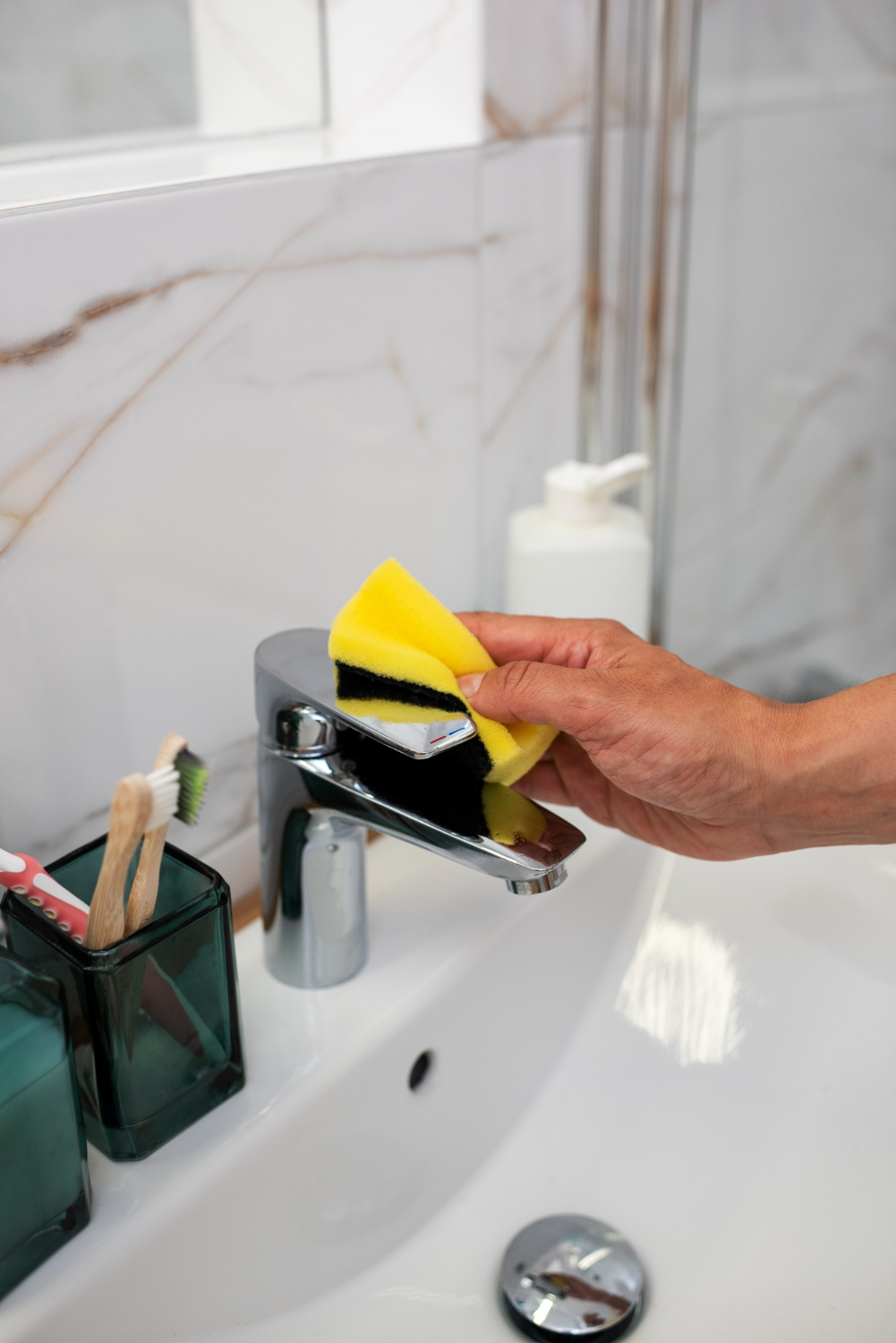Menu
Call This Sunday to Get $50 Off
Do You Need a Plumber in Dallas, TX? Call us Now to Get $50 OFF
4.8 / 5 Ratings based on 1384 reviews Great Plumbers, Great Reviews
Call This Sunday to Get $50 Off
Limescale is that chalky, white crust you might see around your faucets, showerheads, or inside your kettle. It builds up over time when hard water — water with high levels of calcium and magnesium — leaves behind mineral deposits. While it might initially seem harmless, limescale can damage your appliances, reduce water flow, and even cause plumbing issues. That’s why it's a smart idea to clean it regularly. If you’ve ever had to call a plumber because your water pressure dropped or your coffee maker stopped working, limescale might have been the cause. Mr. Rooter Plumbing says limescale buildup is one of the most common reasons homeowners need plumbing help.

Limescale isn’t just an eyesore — it can clog pipes and wear out your appliances faster. It builds up inside pipes, hot water heaters, dishwashers, and washing machines. Over time, this can lead to expensive repairs or early replacements. And if you’ve already had to hire a plumbing repair service, you know that it can get pricey.
Even a small buildup can block water flow or affect the performance of your appliances. That’s why it's super important to remove limescale and prevent it from coming back.
You don’t have to be a plumber in Allen, TX to spot limescale. Look out for:
If you see any of these signs, it’s time to take action. Mr. Rooter Plumbing often sees homeowners call only after things get worse. But with regular care, you can fix the problem yourself.
You don’t need fancy tools or toxic chemicals to remove limescale. Here are a few easy and affordable ways to do so at home.
This natural combo works great for sinks, faucets, and showerheads.
For stubborn areas, sprinkle baking soda on the vinegar before scrubbing.
The acid in lemon juice breaks down limescale like vinegar does — and it smells better!
Lemon juice is perfect for shower doors and faucets.
These are great for kettles, coffee makers, or washing machines. Follow the directions on the product label. Afterward, run an extra cycle with plain water to rinse out any leftover solution.
If you’re unsure how to use them safely, Mr. Rooter Plumbing recommends checking your appliance manual first or calling a trusted plumbing repair service for help.
Once you’ve cleaned the limescale, it’s smart to stop it from coming back. Here are a few ways to keep your home limescale-free:
After using the sink or shower, dry the surface with a towel. Water left behind will evaporate, leaving minerals behind, which turn into limescale.
A water softener removes the minerals that cause limescale before they reach your pipes and appliances. Over time, this can save you a lot of trouble (and money).
Small filters can be attached to your faucet or showerhead. These help trap the minerals before they can stick around.
Run vinegar or descaling solution through your coffee maker, dishwasher, and washing machine once a month. Mr. Rooter Plumbing says that this simple habit can extend the life of your appliances and help you avoid calling a plumber down the line.
Sometimes, limescale gets so bad that DIY fixes won’t cut it. If water isn’t flowing right or your appliances aren’t working like they should, it might be time to call a plumbing repair service. Deep buildup inside your pipes can’t always be reached from the outside.
Mr. Rooter Plumbing has seen cases where limescale almost completely blocked a pipe. In such situations, professional tools and experience are needed to fix the issue without damaging your plumbing.
Keeping your home clean and safe doesn’t have to be hard. By understanding limescale, spotting the signs early, and using simple cleaning tricks, you can avoid expensive damage. If you’re not sure how to handle a tough job or you’re tired of battling buildup repeatedly, it might be time to call in the pros.
Mr. Rooter Plumbing has helped thousands of families keep their homes running smoothly. Don’t let limescale wreck your appliances or cause plumbing issues that are harder to fix later.
If you’ve noticed signs of limescale in your kitchen or bathroom, now’s the time to take action. Regular cleaning, smart habits, and knowing when to call a professional plumbing repair service can save you time, money, and stress.
Your home should feel clean and work how it’s supposed to — and keeping limescale under control is a big part of that. Don’t wait until it’s too late! Start cleaning today, and if things get out of hand, give Mr. Rooter Plumbing a call for backup.
A sink full of dishwasher water can be a shock, but it tells you something…
Read More+A good food prep routine makes life easier until your disposal starts to grind louder…
Read More+Clogged drains are irritating. Water pools in a sink. Hair collects in a shower, and…
Read More+A kitchen sink is a fixture you use every single day without giving it much…
Read More+